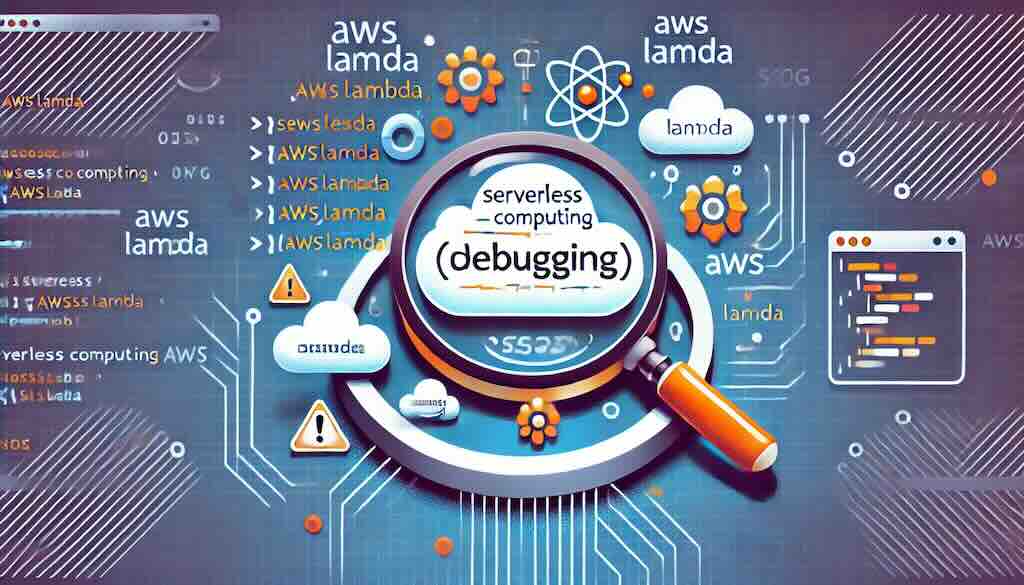Researchers Focus In On ‘Lightcone Bound’ To Develop An Efficiency Benchmark For Quantum Computers

The researchers formulated this bound by first reinterpreting the quantum
circuit mapping challenge through quantum information theory. They focused on
the SWAP “uncomplexity,” the lowest number of SWAP operations needed, which they
determined using graph theory and information geometry. By representing qubit
interactions as density matrices, they applied concepts from network science to
simplify circuit interactions. To establish the bound, in an interesting twist,
the team employed a Penrose diagram — a tool from theoretical physics typically
used to depict spacetime geometries — to visualize the paths required for
minimal SWAP-gate application. They then compared their model against a
brute-force method and IBM’s Qiskit compiler, with consistent results affirming
that their bound offers a practical minimum SWAP requirement for near-term
quantum circuits. The researchers acknowledge the lightcone model has some
limitations that could be the focus of future work. For example, it assumes
ideal conditions, such as a noiseless processor and indefinite parallelization,
conditions not yet achievable with current quantum technology. The model also
does not account for single-qubit gate interactions, focusing only on two-qubit
operations, which limits its direct applicability for certain quantum
circuits.
Evaluating your organization’s application risk management journey
One way CISOs can articulate application risk in financial terms is by linking
security improvement efforts to measurable outcomes, like cost savings and
reduced risk exposure. This means quantifying the potential financial fallout
from security incidents and showing how preventative measures mitigate these
costs. CISOs need to equip their teams with tools that will help them protect
their business in the short and long term. A study we commissioned with
Forrester found that putting application security measures in place could save
average organization millions in terms of avoided breach costs. ... To keep
application risk management a dynamic, continuous process, CISOs integrate
security into every stage of software development. Instead of relying on
periodic assessments, organisations should implement real-time risk analysis,
continuous monitoring, and feedback mechanisms to enable teams to address
vulnerabilities promptly as they arise, rather than waiting for scheduled
evaluations. Incorporating automation can also play a key role in streamlining
this process, enabling quicker remediation of identified risks. Building on
this, creating a security-first mindset across the organisation – through
training and clear communication – ensures risk management adapts to new
threats, supporting both innovation and compliance.
How a Second Trump Presidency Could Shape the Data Center Industry

“We anticipate that the incoming administration will have a keen focus on AI and
our nation’s ability to be the global leader in the space,” Andy Cvengros,
managing director, co-lead of US data center markets for JLL, told Data Center
Knowledge. He said to do that, the industry will need to solve the transmission
delivery crisis and continue to increase generation capacity rapidly. This may
include reactivating decommissioned coal and nuclear power plants, as well as
commissioning more of them. “We also anticipate that state and federal
governments will become much more active in enabling the utilities to
proactively expand substations, procure long lead items and support key
submarket expansion through planned developments,” Cvengros said. ... Despite
the federal government’s likely hands-off approach, Harvey said he believes
large corporations might support consistent, global standards – especially since
European regulations are far stricter. “US companies would prefer a unified
regulatory framework to avoid navigating a complex patchwork of rules across
different regions,” he said. Still, Europe’s stronger regulatory stance on
renewable power might lead some companies to prioritize US-based expansions,
where subsidies and fewer regulations make operations more economically
feasible.
Data Breaches are a Dime a Dozen: It’s Time for a New Cybersecurity Paradigm

The modern-day ‘stack’ includes many disparate technology layers—from physical
and virtual servers to containers, Kubernetes clusters, DevOps dashboards, IoT,
mobile platforms, cloud provider accounts, and, more recently, large language
models for GenAI. This has created the perfect storm for threat actors, who are
targeting the access and identity silos that significantly broaden the attack
surface. The sheer volume of weekly breaches reported in the press underscores
the importance of protecting the whole stack with Zero Trust principles. Too
often, we see bad actors exploiting some long-lived, stale privilege that allows
them to persist on a network and pivot to the part of a company’s infrastructure
that houses the most sensitive data. ... Zero Trust access for modern
infrastructure benefits from being coupled with a unified access mechanism that
acts as a front-end to all the disparate infrastructure access protocols – a
single control point for authentication and authorization. This provides
visibility, auditing, enforcement of policies, and compliance with regulations,
all in one place. These solutions already exist on the market, deployed by
security-minded organizations. However, adoption is still in early
days.
AI’s math problem: FrontierMath benchmark shows how far technology still has to go

Mathematics, especially at the research level, is a unique domain for testing
AI. Unlike natural language or image recognition, math requires precise, logical
thinking, often over many steps. Each step in a proof or solution builds on the
one before it, meaning that a single error can render the entire solution
incorrect. “Mathematics offers a uniquely suitable sandbox for evaluating
complex reasoning,” Epoch AI posted on X.com. “It requires creativity and
extended chains of precise logic—often involving intricate proofs—that must be
meticulously planned and executed, yet allows for objective verification of
results.” This makes math an ideal testbed for AI’s reasoning capabilities. It’s
not enough for the system to generate an answer—it has to understand the
structure of the problem and navigate through multiple layers of logic to arrive
at the correct solution. And unlike other domains, where evaluation can be
subjective or noisy, math provides a clean, verifiable standard: either the
problem is solved or it isn’t. But even with access to tools like Python, which
allows AI models to write and run code to test hypotheses and verify
intermediate results, the top models are still falling short.
Can Wasm replace containers?

One area where Wasm shines is edge computing. Here, Wasm’s lightweight,
sandboxed nature makes it especially intriguing. “We need software isolation on
the edge, but containers consume too many resources,” says Michael J. Yuan,
founder of Second State and the Cloud Native Computing Foundation’s WasmEdge
project. “Wasm can be used to isolate and manage software where containers are
‘too heavy.’” Whereas containers take up megabytes or gigabytes, Wasm modules
take mere kilobytes or megabytes. Compared to containers, a .wasm file is
smaller and agnostic to the runtime, notes Bailey Hayes, CTO of Cosmonic.
“Wasm’s portability allows workloads to run across heterogeneous environments,
such as cloud, edge, or even resource-constrained devices.” ... Wasm has a clear
role in performance-critical workloads, including serverless functions and
certain AI applications. “There are definitive applications where Wasm will be
the first choice or be chosen over containers,” says Luke Wagner, distinguished
engineer at Fastly, who notes that Wasm brings cost-savings and cold-start
improvements to serverless-style workloads. “Wasm will be attractive for
enterprises that don’t want to be locked into the current set of proprietary
serverless offerings.”
Authentication Actions Boost Security and Customer Experience

Authentication actions can be used as effective tools for addressing the
complex access scenarios organizations must manage and secure. They can be
added to workflows to implement convenience and security measures after users
have successfully proven their identity during the login process. ... When
using authentication actions, first take some time to fully map out the
customer journey you want to achieve, and most importantly, all of the
possible variations of this journey. Think of your authentication requirements
as a flowchart that you control. Start by mapping out your requirements for
different users and how you want them to sign up and authenticate. Understand
the trade-off between security and user experience. Consider using actions to
enable a frictionless initial login with a simple authentication method. You
can use step-up authentication as a technique that increases the level of
assurance when the user needs to perform higher-privilege operations. You can
also use actions to implement dynamic behavior per user. For instance, you can
use an action that captures an identifier like an email to identify the user.
Then you can use another action to look up the user’s preferred authentication
method or methods to give each user a personalized experience.
How Businesses use Modern Development Platforms to Streamline Automation
APIs are essential for streamlining data flows between different systems. They
enable various software applications to communicate with each other,
automating data exchange and reducing manual input. For instance, integrating
an API between a customer relationship management (CRM) system and an email
marketing platform can automatically sync contact information and campaign
data. This not only saves time, but also minimizes errors that can occur with
manual data entry. ... Workflow automation tools are designed to streamline
business processes by automating repetitive steps and ensuring smooth
transitions between tasks. These tools help businesses design and manage
workflows, automate task assignments, and monitor progress. For example, tools
like Asana and Monday.com allow teams to automate task notifications,
approvals, and status updates. By automating these processes, businesses can
improve collaboration and reduce the risk of missed deadlines or overlooked
tasks. Workflow automation tools also provide valuable insights into process
performance, enabling companies to identify bottlenecks and optimize their
operations. This leads to more efficient workflows and better resource
management.

“Micromanagement is one of the fastest ways to destroy IT culture,” says Jay
Ferro, EVP and chief information, technology, and product officer at Clario.
“When CIOs don’t trust their teams to make decisions or constantly hover over
every detail, it stifles creativity and innovation. High-performing
professionals crave autonomy; if they feel suffocated by micromanagement,
they’ll either disengage or leave for an environment where they’re empowered
to do their best work.” ... One of the most challenging issues facing
transformational CIOs is the overwhelming demand to take on more initiatives,
deliver to greater scope, or accept challenging deadlines. Overcommitting to
what IT can reasonably accomplish is an issue, but what kills IT culture is
when the CIO leaves program leaders defenseless when stakeholders are
frustrated or when executive detractors roadblock progress. “It demoralizes IT
when there is a lack of direction, no IT strategy, and the CIO says yes to
everything the business asks for regardless of whether the IT team has the
capacity,” says Martin Davis, managing partner at Dunelm Associates. “But it
totally kills IT culture when the CIO doesn’t shield teams from angry or
disappointed business senior management and stakeholders.”
Understanding Data Governance Maturity: An In-Depth Exploration

Maturity in data governance is typically assessed through various models that
measure different aspects of data management such as data quality and
compliance and examines processes for managing data’s context (metadata) and
its security. Maturity models provide a structured way to evaluate where an
organization stands and how it can improve for a given function. ... Many
maturity models are complex and may require significant time and resources to
implement. Organizations need to ensure they have the capacity to effectively
handle the complexity involved in using these models. Additionally, some data
governance maturity models do not address the relevant related data management
functions, such as metadata management, data quality management, or data
security to a sufficient level of detail for some organizations. ...
Implementing changes based on maturity model assessments can face resistance;
organizational culture may not accept the views discovered in an assessment.
Adopting and sustaining effective change management strategies and choosing a
maturity model carefully can help overcome resistance and ensure successful
implementation.
Quote for the day:
"Whenever you see a successful person,
you only see the public glories, never the private sacrifices to reach
them." -- Vaibhav Shah















